Ivan Petkov
Wine is a drink that provokes passions. Therefore, making it requires passion. It should be moderate and sufficient for any experienced wine grower knows that what is in excess or scarce immediately affects the taste of this gift from the gods. No, do not think that everything is somehow too strict and rational. It takes a portion of sunlight, the right amount of moisture, the required soil with sufficient acidity and people with lots of love for wine to work all year round with the sole purpose of making wine. Then it takes patience in order for wine to mature, and zeal to reach the right customers. Competition is great, because wine is made all over the world. Only assessing a good wine properly is more difficult than making it, as every wine grower would say.

Of course, the dispute about the homeland of wine is clear in itself because the drink dates back to ancient times and the title of being its "inventor" is very prestigious. While the dispute about the homeland of wine continues between the descendants of Persians, Phoenicians, Greeks, Armenians, Turks, and others it is important to know that the drink appeared simultaneously with the birth of civilization. Even we Bulgarians can take part in it, because some of the data show that the region around the Black Sea is also part of the heated debate. Regardless of who invented wine, and where, it is the Greeks who attached glory, praise and divinity to the drink. Wine culture flourished in the Mediterranean and marked the rise and fall of countries and civilizations. The Romans took the baton and spread vineyards throughout the empire, undertaking to convince the world that in wine there is truth. The Celts invented barrels whereas glass bottles came from Syria. The Vikings called the New World Vinland because of the various varieties they found there. In the Middle Ages, the Church continued the work of ancient winemakers because of the metaphor for the blood of Christ. Very quickly, its metaphysical meaning and purpose entered everyday life again, for pleasure and as a sign of luxury and high social status. In the era of tumultuous trips around the world, wine was present on each ship and logically, discoverers transported it in order to spread it worldwide.
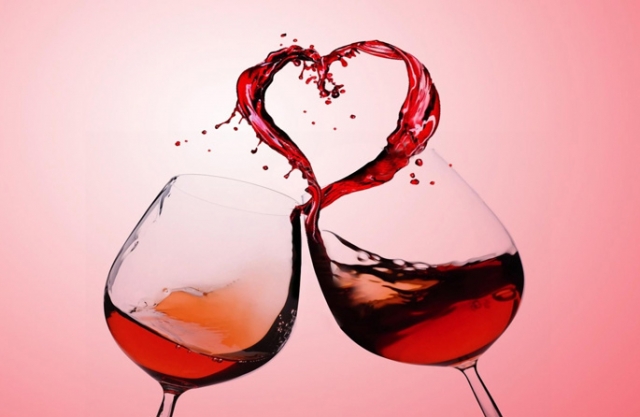
Wine brings intoxication and often it is compared with love thrills and sorrows, with divine revelations and the power of the human spirit. But as is known from ancient times, everything is in the dose.
Wine is a drink of the senses. Not only the palate and nose feel and assess it, but all the senses.
Drinking with the eyes
Sometimes sommeliers say that just as we judge someone on their clothes, so we can know wine. Vine grapes are rich in colour, thus giving a different colour to the drink itself and refracting light differently. The colour assessment is based on indicators such as colour, shade, clarity, density and the presence of "tears" in the glass, which are visible to every expert. Of course, each specialist has more and secret criteria, and a feeling that show him or her what to expect before tasting the drink.
Tip: you can most easily assess the virtues of the wine that you will consume by tilting the glass at 45 degrees and looking at it against a white surface. This applies primarily to the colour of wine. Clarity is evident when you hold the glass against direct sunlight, at eye level.
I guess that one can think by oneself of the tips previously mentioned. But what does the presence of "tears" in a wine glass mean? If you have seen a professional connoisseur or just a wine lover, you cannot but have noticed that they rotate the contents of the glass with a light movement of the wrist so that wine forms a small whirlpool. The more drops that run down the walls of the glass, the higher the alcohol content. Do not confuse this with the quality of the drink.
However, these are not all the secrets of the visual assessment of wine but they are enough for people who drink wine for pleasure. The rich colour and the presence of certain shades will activate the centres of pleasure and aesthetics, as well as taste receptors in advance. But do not rush!
Trust in your sense of smell
In addition to forming "tears", the rotation of wine is aimed at releasing its flavour. Tilt the glass to your nose and take slow breaths, a few seconds long, to allow your nose to inhale the rich flavour of the wine. However, try not to overdo it because the nose quickly overworks itself and it may stop noting the difference in flavours. Do not forget that, unlike specialists, we drink wine for pleasure and several breaths are enough to feel the sensual flavours of wine with our noses. Do not be surprised that wine flavours are often described as "bold" or "melancholic." Although you are not a specialist, allow them to merge with your momentary emotions.
There is also the so-called "dry smelling" that professionals apply to a "dry" glass in which previously there was wine. Alas, for most people this smell means only one thing, namely that the wine has been drunk and the evening is over or entering another stage.
To give substance to the information on flavours, I will mention that there are varieties of charts, one of which includes 12 different flavours and 94 specific shades in each category.
We need a few basic ones, but mixed with emotion, they remain unforgettable.
The tongue in the role of a judge
The assessment of wine taste is the most pleasant and long awaited part, but also the most difficult. Wine has many flavours due to a variety of factors such as the grape variety or varieties, the technology of making and maturing... and many more. It is important to know that the flavours are produced in a different way and different parts of your tongue, the palate and nose again sense them in a different manner as well. When drinking the first sip, the volatile substances in wine evaporate and enter the nasal cavity. Therefore, we speak not only about taste but also about taste flavours.
Curious facts: Even Aristotle classified the four basic tastes: sweet, salty, sour and bitter. And modern science has established with certainty the position of the various taste receptors on the tongue.

It is really funny to watch professional tasters. They puff, drink noisily and make sounds that every well-mannered person avoids. On top of that, they spit out the wine. If you do not know or cannot guess, they do so not to assess its qualitative or quantitative characteristics but because of its alcohol content since they have to try several dozens, even hundreds, of wines. And it is not prestigious to walk between the tables tottering. If you happen to find yourself at a wine tasting event and if you know your limits, then do not hesitate to taste wine. Ultimately, it is made for this purpose and the full pleasure of it is experienced in this way. Here is a trick: you can eat some bread and let it divide the tastes of different wines.
If you have gathered with friends to try several bottles of different wines, it is not necessary to use tricks as drinking the wine is a must.
Ultimately, what makes a good wine?
Many factors, as already described. Firstly, it is the area where the vineyards are located. It is no accident that wines bear the name of the region where they are made. A classic example is Champagne, the name of which comes from the French province of Champagne.
There is a criterion called "complexity" that combines all of the above ways of becoming familiar with wine, taste and flavour being the main factors. We could call complex the wine in which we find more than a few "storylines", both in the nose and in terms of its taste and flavours. Everything is so intertwined that it leaves a feeling of harmony and perfection of the drink. Such wine reveals itself gradually: from the initial attack of taste through the development of the various flavours that change over time after sipping, and even after each sip. Such well-aged wines are soft and leave a distinctive aftertaste. They are said to be "long wines."
Another criterion is the "typicality" of a wine. Ultimately, if all wines were alike, it would not matter where they were made, with what technology, how, and how long, they matured. We could call a wine typical of the variety from which it was made, if it has its basic characteristics.
You have already guessed that the criteria for assessing a wine are many and often subjective, based on the experience, taste receptors and prestige of those who assess it. The qualities of a variety that are accepted as typical are the result of consensus among a group of people whose opinion is taken as a reference. But let us not forget with what we started at the beginning, namely that wine brings passion and experiencing it is subjective. Therefore, the disputes about wines, the establishment of new wine cellars, the struggle between tradition and modernity, will continue while there is wine.

How to taste wine in a few quick and easy steps:
Step 1
Look at the wine. See the colour of wine against a white background and further assess the nuances and clarity of the wine against direct light. Enjoy the splendour of the colour and its shades, and drink them with the eyes.
Step 2
Swirl the wine in the glass with a rhythmical movement. Be careful, because wine leaves very strong stains and we usually drink it in a selected company. You can look for "tears" to judge the alcohol content in the drink.
Step 3
The rotating of the glass activates the wine flavours. Take a smell of it by taking a few breaths of 2 to 4 seconds. Do not overdo it, so as not to overload your nose with flavours. Enjoy the flavours with which you are connecting. Allow them to trigger your imagination. The sense of smell is among those senses that we do not use constantly, unlike the eyes and ears, but often it has a strong emotional charge and stimulates old memories and new hopes.
Step 4
Have a sip of wine, ‘walk’ it around your mouth and allow its taste flavours to reveal themselves. Professionals recommend breathing a little air through the mouth in order to enrich its taste. You can try it, making sure that the wine remains in your mouth.
Step 5
Swallow the wine. We said that only professionals spit it out. If you want, you can try this way, no one can prevent you from feeling like a professional sommelier, even if only for a moment. Feel the aftertaste and the release of flavour. You can try to feel how the wine qualities develop, evolve and change.
Step 6
Describe what you feel. You will be surprised by the poetry that a sip of wine provokes alone. Do not attempt to use the stock poetic "terminology" that specialists use. Wine is a subjective experience that expresses the relationship between you and it. However, a few poetic and distinctive expressions bring much more fun. What is better than raising one’s spirits? Isn’t it why we consume wine?
How wine obtains its colour?
Fresh grape juice is generally colourless. How are different wines obtained in terms of colour, namely white, rosé, red? And why is there such a huge variety of colours? The colour of wine is in the grape skin. The riper the grapes are, the more dye is in their skin. When mashing the grapes, the skin tears and interacts with the other part of the grapes by colouring it. The longer the skin is involved in the entire process, the more colour it attaches to the wine, making it darker and denser. In white wines, the contact of the skin with the remaining part is minimal, in rosé wines it lasts a few hours and their colour depends on the duration of that interaction. In red wines, the skin interacts with the rest of the wine throughout the fermentation. The question however is whether a dark grape variety can make white wine. The answer is positive and it is called "Blanc de noir" or white wine from black grapes.
The wine colour depends on the grape variety itself, as each variety has a different grain size, and skin texture and colour. Wine maturity and age are also important for its colour. Over time, the colour becomes lighter and changes.
The romance between wine and oak
Imagining a cool, dark cellar full of barrels with maturing wine brings a special mood. It is enough to read the bottle label and the picture fascinates us. It is wine makers’ pride and they often emphasize it.
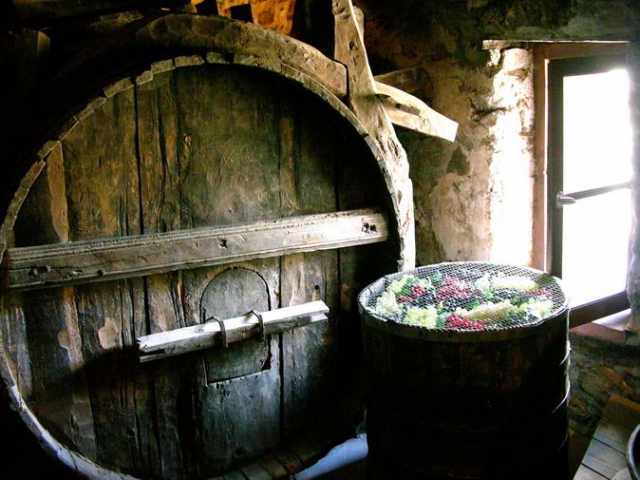
Oak barrels have replaced animal skins and clay amphorae. There are other types of barrels but oak is an indispensable ruler when it comes to wine. It is solid, flexible and lends special flavour and these features make it so valuable. It is ideal for fermentation as well as for aging and storage. Most often the new barrels are reserved for the best wines, as oak aftertaste is strong and the tree has not been smoked to eliminate the taste of previous harvests. In modern times, oak taste can be added even if the wine is not maturing in oak barrels. It is a matter of views and technology.
Grape varieties and vineyards
There are over 5,000 different grape varieties that are called in thousands of different ways. About 150 are important for winemaking. The development of vineyards and the selection of the grape variety that is most appropriate for the terrain is a science that is at the beginning of wine making. Replanting cuttings, maintaining a specific density and height of the grapevines, the preferred humidity and composition of soil, all this is contained in the term "terroir" that can be generally translated as a feeling about the place - the combination of natural, geographical and other factors that give the variety its unique taste and flavour.
Among the varieties for white wines, we can mention Chardonnay, Sauvignon Blanc, Muscat and, for red wine,s Cabernet Sauvignon, Merlot, Pinot Noir, Syrah. As for rosé wines, it is important to know that they are obtained not by mixing red and white wines but by the duration of the contact between the grape skins and the wine.
The typical Bulgarian varieties include Mavrud, Muscat, Dimiat, Pamid, Keratsuda, Gamza.
The imported typical Greek grape varieties are Assyrtiko (from Santorini), Roditis (Peloponnese), Savatiano, Moschofilero, Ribolla, Xinomavro, Agiorgitiko, Limnio, Mavrodafni and Mandilaria.
Cork, glass or screwcaps?
There are four main ways to close wine. Each has its advantages and disadvantages. Cork is ancient, expensive and allows wine to breathe. However, it can change its taste qualities and spoil its valuable content. It has a sentimental value and a modern environmental importance. Artificial stoppers cannot spoil the wine, but they are what they are - cheap and artificial. They do not give a sense of antiquity and authenticity. Glass stoppers are expensive and uncommon. They are limited editions intended to attach sophistication. Screwcaps have recently become common, aiming to be a compromise between price, vision and the ability to preserve wine quality. However, we associate them with other types of drinks.
Is there a reason to wish good health with an alcoholic beverage?
What are the benefits of moderate wine drinking? We can find them in more than a few studies, including in those on the fight against heart attacks. Let us list some of them so that you can judge what is the right amount, since wine
- Reduces the risk of cardiovascular diseases, atherosclerosis, high blood pressure
- Purifies blood and prevents anaemia
- Stimulates metabolism and increases physical endurance
- Prevents tooth decay and infections of the respiratory tract
- Helps prevent inflammation of the gastrointestinal tract
It has even more benefits but I think these are sufficient. Adding to all that the fact that it stimulates good mood when consumed in moderation and with pleasure, it is not surprising that wine has accompanied man for thousands of years.
So, in Bulgaria we say "Nazdrave" (to your health) and in Greece "Στην υγειά μας", which has a similar meaning too.
How to select wine?
Do not expect any universal and proven rules. In fact, there may be some only with regard to the choice itself, but there is no exact recipe for the best purchase, because of the fact that wine is made of crops and depends on the vagaries of the weather and the purely subjective experience. The easiest way is to select wine according to your budget and mood, the occasion and the type of food that will be consumed with it. And finally, according to your experience and personal preferences.
Because wine is an emotion, it would be better to try new tastes, which is not difficult in view of the global world in which we live and the great competition in the market, which makes wine more affordable.
Balkan wine
As our articles, interviews and news stories have made clear more than once, we in the Balkans are both identical and do not know each other. Food is an occasion for them to split while attempting to be recognized as the unique and only prime sources of certain types of foods. Wine is no exception. Although our region can be considered the cradle of wine as I mentioned, we seem to dare to "betray" domestic and familiar wines only when we are on tour or on holiday in one of our neighbours.
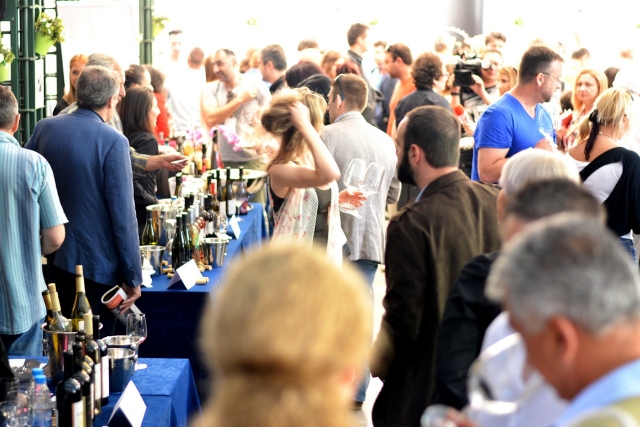
My visit to "THE BALKANS INTERNATIONAL WINE COMPETITON" that was accompanied by a wine festival confirms my impressions. While talking with many participants I found out that all in the Balkans are aimed at their domestic markets and the traditional markets of wine consumers. Far Eastern markets such as China should not be underestimated either.
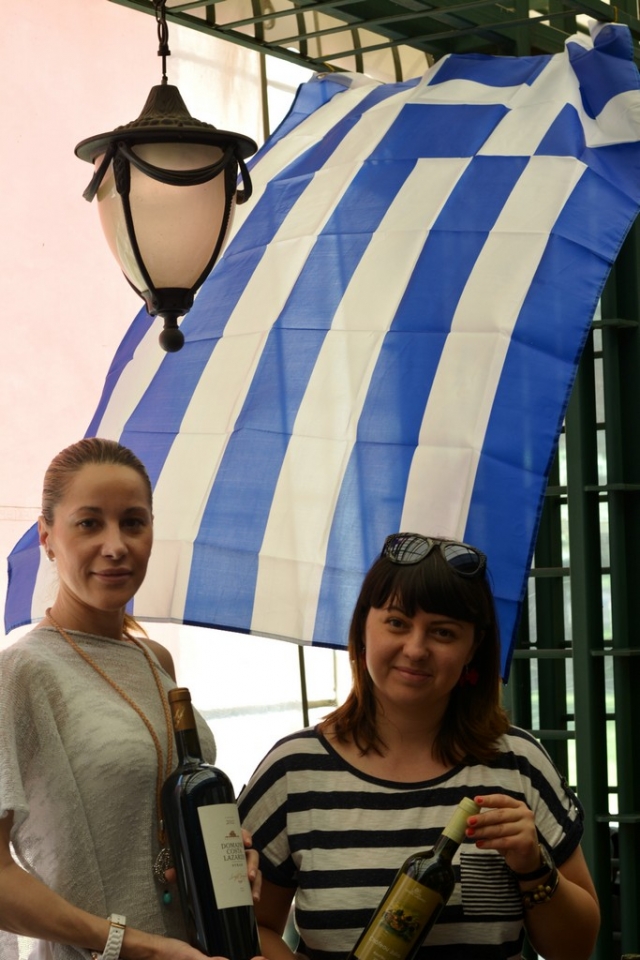
My question as to why we do not know the wines of our neighbours received many similar responses. First is the mentality of local consumers to prefer domestic production, be it for sentimental and patriotic reasons, or price considerations. The latter are due to the protectionism that some of the Balkan countries have established. Bulgarian wine producers are of the opinion that of all the Balkan countries, only Bulgaria has no such policy to protect domestic winemaking. Greek producers with whom I spoke were more cautious, but their words suggested that the Bulgarian market is small and, unfortunately, not very solvent. Therefore, their hopes to enter our market are mainly related to the restaurant and hotel business and they are not planning direct sales in shops for the time being. However, Bulgarians know Greek wines from their visits to our neighbour, and Greeks who visit Bulgaria know our wines.
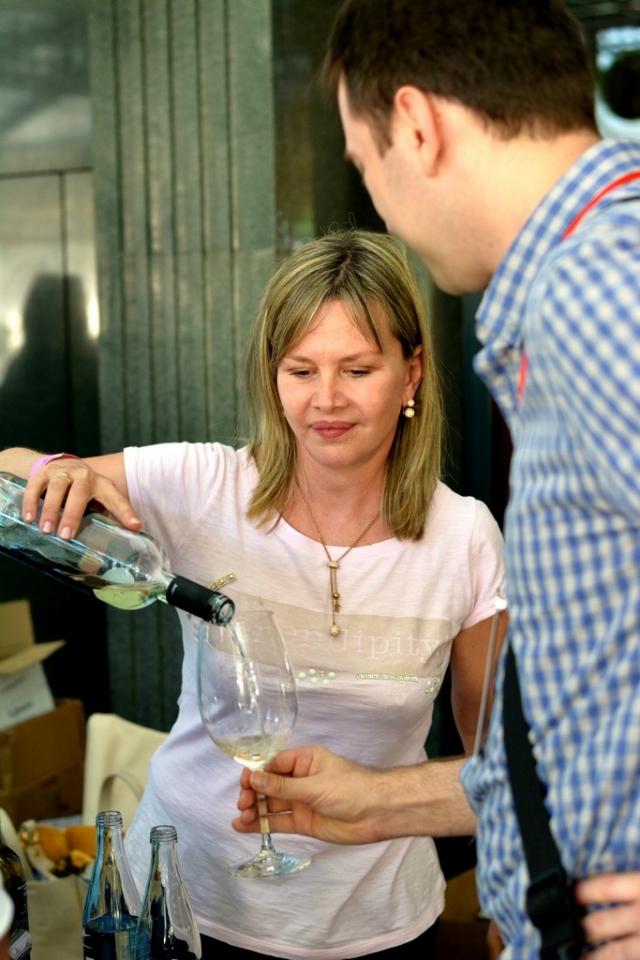
I talked to importers of Greek products, including wines, who said that the interest in Greek wines was growing. Unfortunately, I could not find a winemaker to share a lasting interest in Bulgarian wines on the part of Greece.
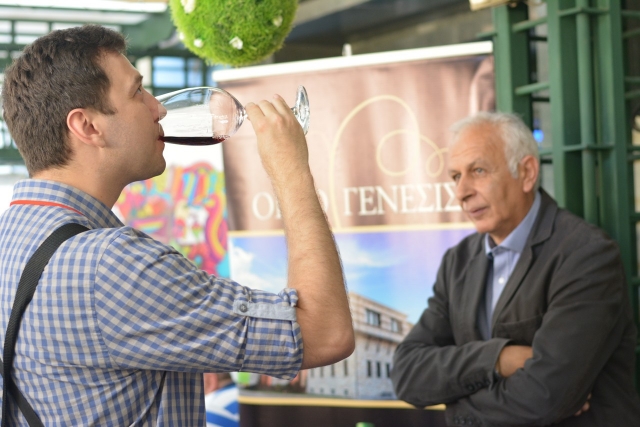
Some of the comments were that the traditional large wine producers are flooding the market, making local competition more difficult and there are concerns that the Bulgarian market has no real quality control to ensure that the writing on the label is what you get in the bottle.

Nevertheless, the fact is that we have the conditions and traditions to produce quality wines. Some of them win international awards and local wineries have their place on the market. As for wine quality, its major arbiter is his majesty the customer.
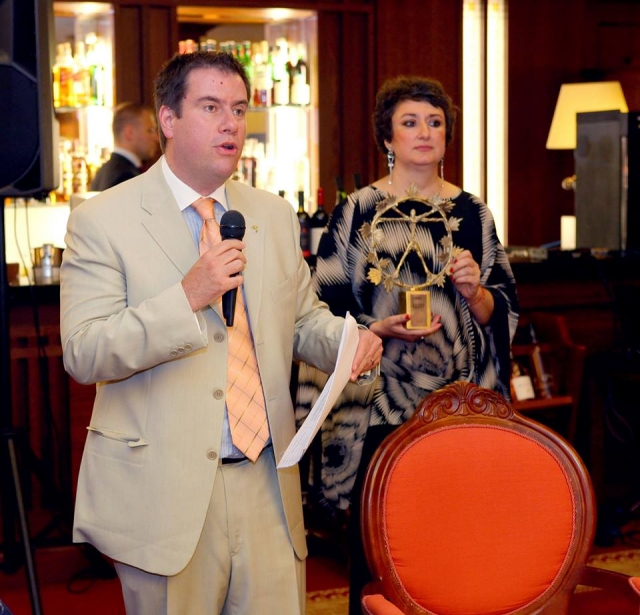
Konstantinos Lazarakis, BIWC chairman and Galina Niforou, BIWC manager
Toast with Socrates
To end this article about the drink of the gods, I will involve Socrates. They say his wife Xanthippe was contentious, evil and stupid. On this occasion Socrates exclaimed, "Every man should marry. If he finds a good wife, he will be the exception, but if he finds a bad one, he will become a philosopher." Here is to women whose husbands do not philosophize!
Wine guarantees good mood!